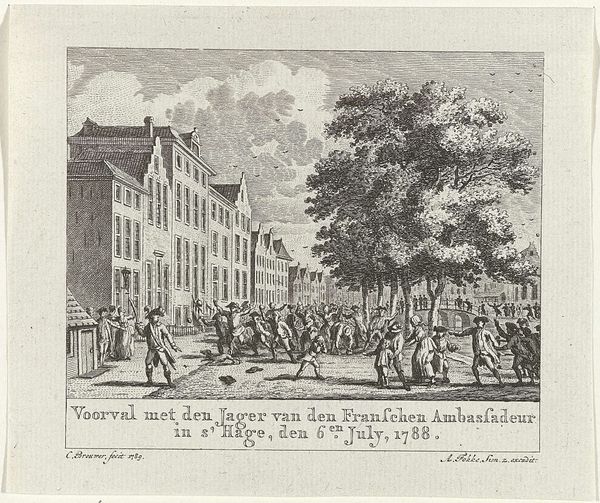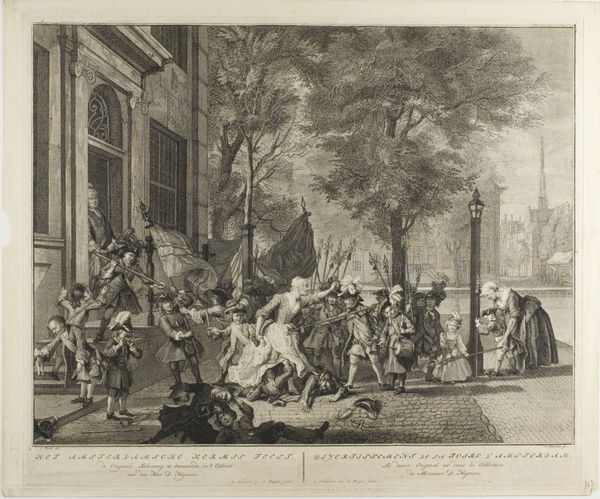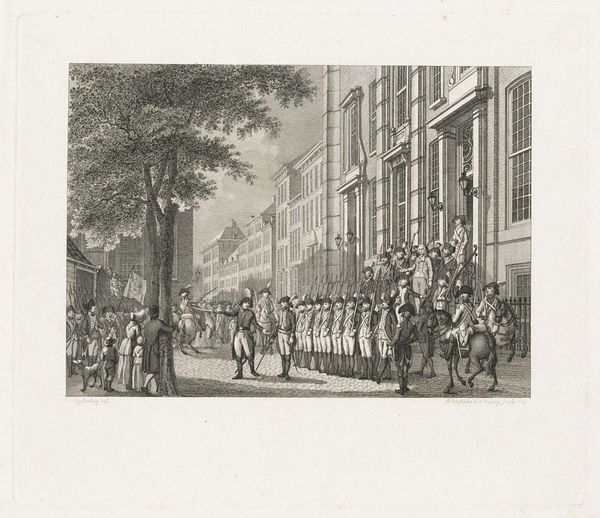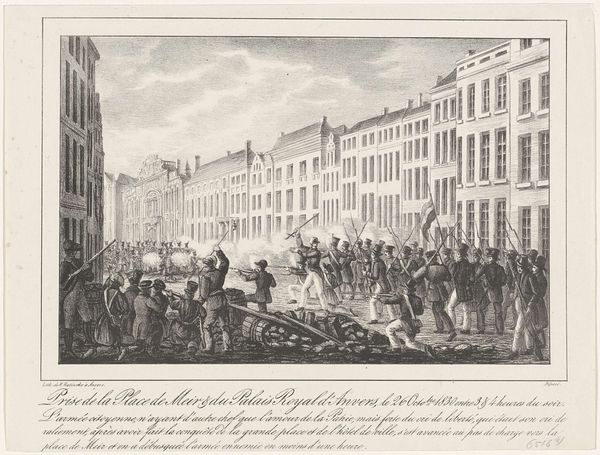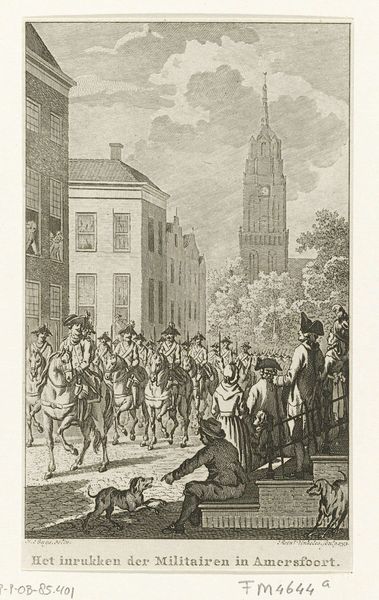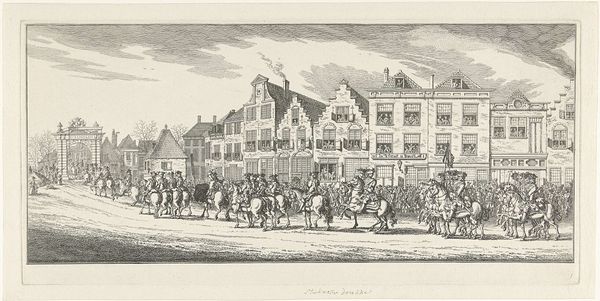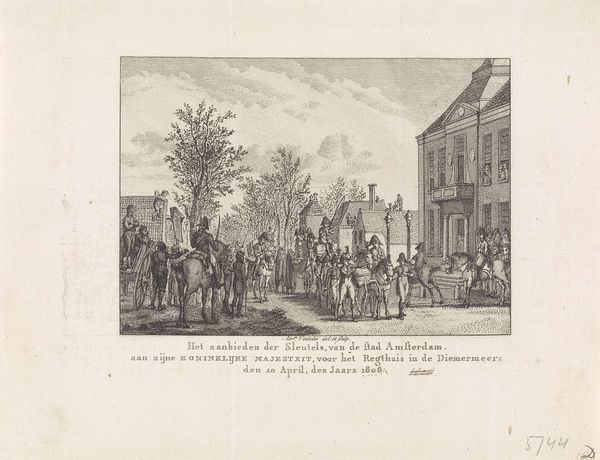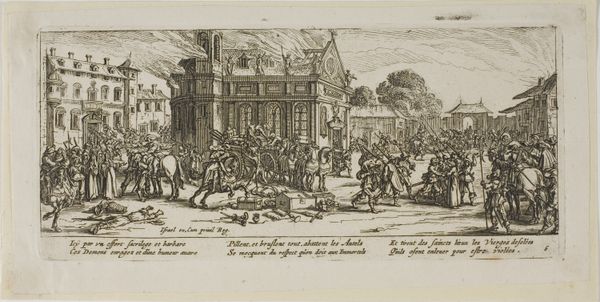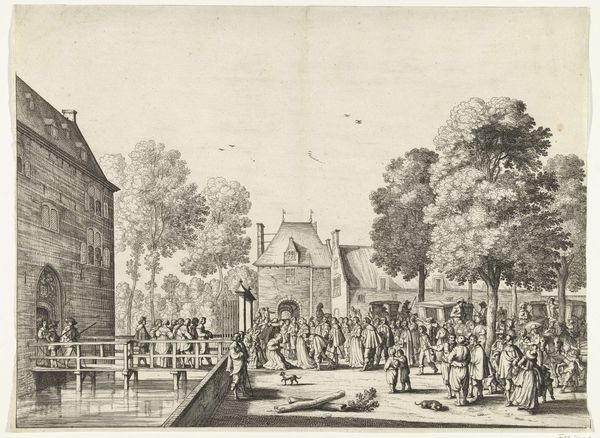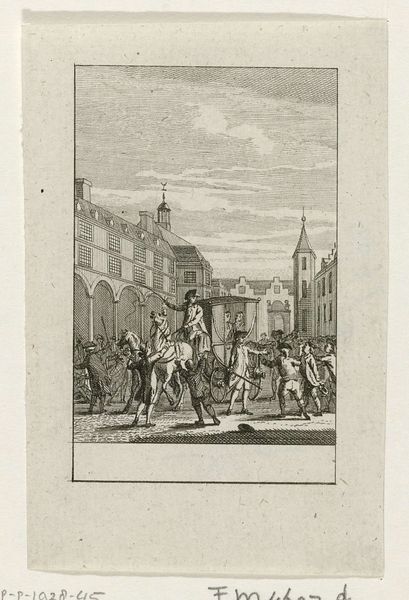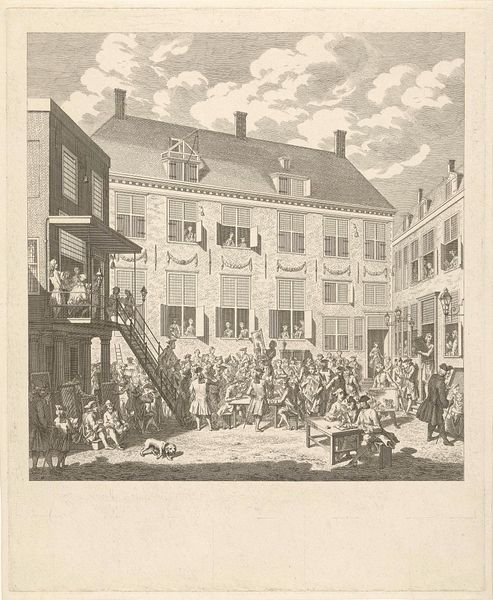
print, engraving
#
neoclacissism
# print
#
cityscape
#
genre-painting
#
history-painting
#
engraving
Dimensions: height 121 mm, width 167 mm
Copyright: Rijks Museum: Open Domain
Curator: What a striking piece of historical commentary. This engraving by Theodoor Koning, titled "Incident met de jager van de Franse ambassadeur, 1788," really captures a moment of social unrest in The Hague. It was created between 1788 and 1789. Editor: The immediacy is captivating, isn't it? The dense cross-hatching of the engraving gives the scene such a palpable sense of tension and frenetic energy, you can almost hear the clamor. The material reality of this piece – the metal plate, the etching process – really emphasizes the way information was circulated in the pre-digital age. Curator: Exactly. Contextually, it's fascinating. This scene likely depicts an actual incident involving the French ambassador's huntsman and local citizens. Remember that the Dutch Republic was experiencing considerable internal political turmoil at this time. There's a clear clash between perceived foreign authority and the burgeoning Patriot movement pushing for more democratic governance. Note the use of Neoclassical ideals in rendering the city in the background. Editor: Yes, and thinking about Koning's process, engraving allowed for mass production and distribution of these images, turning events into powerful pieces of propaganda or, at the very least, shaping public opinion. This small, easily reproducible format is central to its socio-political impact. Also, I can't help but look at the cobblestones – consider the material from which the city's streets are formed – quarried from the earth. Curator: Precisely. It's fascinating to consider how a single, relatively minor incident could be amplified into a symbol of broader anxieties about power and national identity. The print’s very existence is tied to political ideologies. We should note how it speaks to anti-aristocratic sentiments present at that historical moment. The artist emphasizes specific details, and these highlight how perceptions were manipulated through such visual media. Editor: Absolutely. It all underscores how material culture intertwines with political narratives and shapes the way society consumed the daily news through objects, the role and accessibility afforded by print technology in this period. Thank you for enriching my reading of this piece by thinking with history in mind! Curator: My pleasure! It just reminds us how every artistic act, no matter how small, resonates with broader historical and social power relations. This visual artefact and record has truly allowed us insight into our political history.
Comments
No comments
Be the first to comment and join the conversation on the ultimate creative platform.
